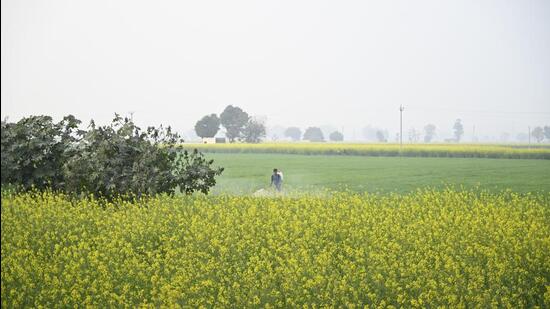High-value produce key to bolstering farm incomes: Economic Survey
The survey said that protectionism, among other reasons, is limiting room to ‘squeeze out’ growth from manufacturing and services
Small and marginal farmers, who account for over 80% of cultivators in the country, should move to high-value agriculture like fruits and vegetables, fisheries, poultry and dairy farming to boost incomes, the Economic Survey 2023-24 said on Monday.

For growth and employment, policymakers may have to increasingly look to the farm sector, which still employs nearly 45% of the workforce, according to the survey.
A switch from farm to non-farm employment and high-wage industrialisation, the typical path countries take to develop, may no longer hold true, it said. The “dual-sector model” of Nobel prize winning economist Arthur Lewis precisely showed how, in countries with large populations, shifting surplus labour out of agriculture to factories could raise wages and growth.
“Earlier development models featured economies migrating from farm beginnings to industrialisation to value-added services in their development journey. Technological advancements and geopolitics are challenging this conventional wisdom,” the survey said.
Hoarding of resources, protectionism excess capacity and dumping, de-globalisation and onshoring of production, and artificial intelligence are limiting the room to “squeeze out” growth from manufacturing and services, the budget-eve document stated.
“Smallholder farmers’ incomes cannot be increased by producing rice, wheat, or even millets, pulses and oilseeds,” the survey said, calling for a shift to high-value crops. “That is what happened in China between 1978 and 1984 when the real incomes of farmers doubled in just six years. India is well-placed to emulate this.”
Food prices were adversely affected by extreme weather conditions in the last two years, creating inflationary pressures, the survey said, adding that the production vegetables and pulses were particularly impacted.
The increase in tomato prices in July 2023 was caused by seasonal changes in crop production, crop diseases such as white fly infestation, and the early arrival of monsoon rains in northern India, according to the survey.
There were also logistics disruptions in isolated areas due to heavy rains, it said. The spike in onion prices was due to several factors, including rainfall during the last harvesting season affecting the quality of rabi onions, delays in sowing during the kharif season, prolonged dry spells impacting kharif production, and trade-related measures taken by other countries, the survey’s analysis showed.
Myriad farm policies, some of the Centre and other of state governments, have worked at cross-purposes with each other, hurting farmers’ interests, destroying soil fertility and depleting groundwater, the document said, calling for a rationalization.





